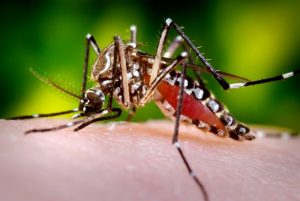NewsDesk @bactiman63
The Ministry of Health together with the Pan American Health Organization (PAHO) presented the first National Action Plan for entomological surveillance and vector control Costa Rica 2022-2024, that is, the first version of a roadmap to strengthen activities for the prevention, surveillance and control of diseases transmitted by insects such as Dengue, Zika, Chikungunya, Malaria, Leishmaniasis and Chagas disease.

“Costa Rica’s tropical climate favors the survival, reproduction and transmission capacity of diseases by vector insects present throughout the national territory; In this sense, this Plan seeks to provide Costa Rican society with a management tool aimed at guiding and strengthening currently existing prevention, entomological surveillance and vector control activities, as well as encouraging the introduction of new technologies and strategies aimed at planning increasingly cost-effective and sustainable interventions” indicated Dr. Rodrigo Marín Coordinator of Vectors of the Ministry of Health.
“Implementation of the action plan will make it possible to strengthen collaboration with new actors, since vector prevention and control actions are not the exclusive responsibility of the health sector, but must involve other government sectors, the academic sector, the private, community and family, thus guaranteeing an integrated response to the socio-environmental determinants involved in the maintenance of vector populations.
Subscribe to Outbreak News TV on YouTube

In 2020 alone, 10,056 cases of Dengue, 528 of Leishmaniasis, 107 of Zika, 136 of Malaria (imported and autochthonous), 50 of Chikungunya and 20 cases of Chagas disease are recorded in the country.
Entomological surveillance constitutes a continuous process, oriented to the collection, systematization, analysis and interpretation of information regarding aspects of the biology, spatio-temporal distribution, and density of the main vector species in a certain region and also seeks to monitor the development of resistance to commonly used insecticides, while vector control focuses on eliminating populations of vector insects or controlling them at levels that do not constitute a risk to public health.
The Plan has five strategic lines:
- Integration at various levels: to strengthen intersectoral work measures with all the sectors involved.
- Government and community: which seeks to establish actions for the participation of communities in vector control at the local, regional and national levels.
- Vector control programs and systems: to improve the surveillance, supervision and control of vectors and resistance to insecticides.
- Tools and interventions: in order to evaluate, document and integrate approaches.
- Workforce and training: to expand the opportunities to receive training on a regular and continuous basis for the personnel in charge.
Related:

